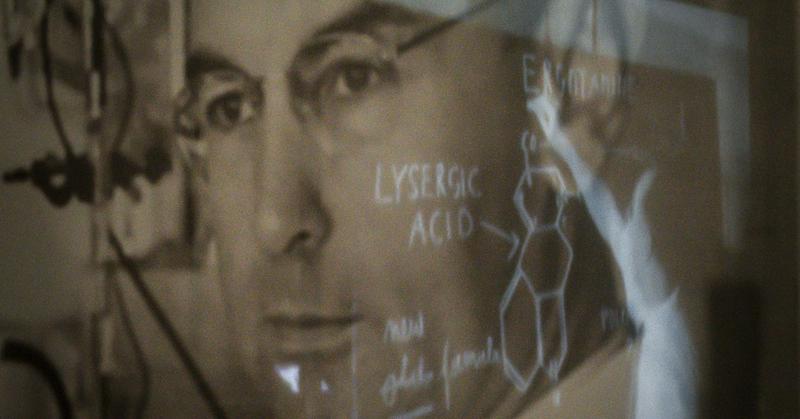Albert Hofmann: The Man Who 'Invented' L.S.D. And Bicycle Day
By | November 1, 2020

You've probably never wondered who invented L.S.D., but it's not like that stuff grows out of the ground. Someone had to spend considerable time in a lab before they hit on the exact combination of chemicals that makes jam bands sound good. That person was a Swiss chemist named Albert Hofmann, thousands of miles and decades away from the hippie hangouts of Haight-Ashbury.

Schizophrenia On Rye
Albert Hofmann was born in Baden, Switzerland on January 11, 1906. His blue-collar family struggled financially, but Hofmann proved to be an excellent student with an affinity for chemistry, so his godfather offered to pay his tuition at the University of Zurich.Hofmann earned his doctorate degree in 1929 and went to work for Sandoz Laboratories, where he experimented with the synthesis of naturally occurring compounds in mind-altering medicinal plants.
Hofmann's primary focus was ergot, a fungus that grows on rye and produces hallucinations along with severely unpleasant side effects when consumed. He hoped his synthetic ergot compound—called LSD-25 because it was his 25th test of the compound—might effectively treat schizophrenia, depression, dementia, and other mental illnesses without the terrible side effects of the fungus.
L.S.D. showed promise as a treatment for several health conditions: In addition to mental illnesses, the similarity of the drug to a stimulant called nicotinic acid diethylamide suggested it could increase respiratory and circulatory function, and tests showed that it relieved uterine maladies. The patients of this study experienced some pretty severe side effects, however, including restless sleep and disrupted consciousness, so L.S.D. was shelved and all but forgotten by 1938.

Bicycle Day
Hofmann moved on to different compounds, but something kept telling him not to give up on L.S.D. Five years after it was shelved, he produced another batch and sent it off for further testing, and that's when things got weird.
You might have heard that Hofmann accidentally stumbled upon the formula for L.S.D., but that's clearly a misunderstanding. By April 16, 1943, he'd been working on it relentlessly for several years. What he didn't mean to do, on that day or any other, was ingest some of it, but there he was.
He later recorded the experience, noting that he experienced a "not unpleasant, intoxicated-like condition" involving visions of brilliant colors, a kaleidoscope of patterns, and intense images. Three days later, Hofmann made his first conscious decision to drop acid, calculating a dose of 250 micrograms. The effects kicked in as Hofmann rode his bicycle home, which is why April 19 is now known to fans of Hofmann's work as Bicycle Day.

Albert Hofmann's Later Life
Hofmann called L.S.D. his "sacred drug" and continued to take small doses throughout his life, believing the drug opened his mind to new possibilities. His scientific research expanded into other types of medicinal and hallucinogenic plants, including psychedelic mushrooms in Mexico that were used by ancient cultures for religious rituals.
Hofmann earned multiple awards and accolades for his research, and in 1956, he became the director of natural products at Sandoz Labs. He retired in 1971, but he was far from finished. He started the Albert Hofmann Foundation, a group that promoted the responsible use of hallucinogens, and continued to advocate for his beloved compound until April 29, 2008, when he passed away at the impressive age of 102. Maybe he was onto something.

